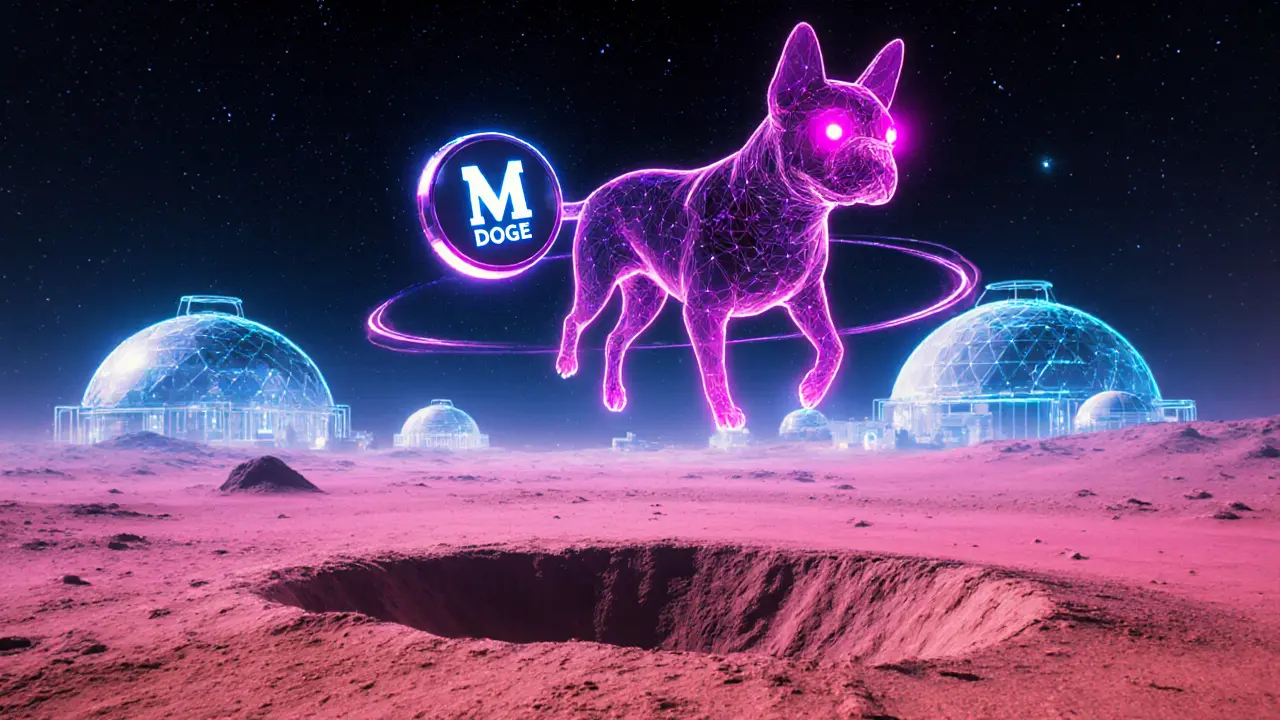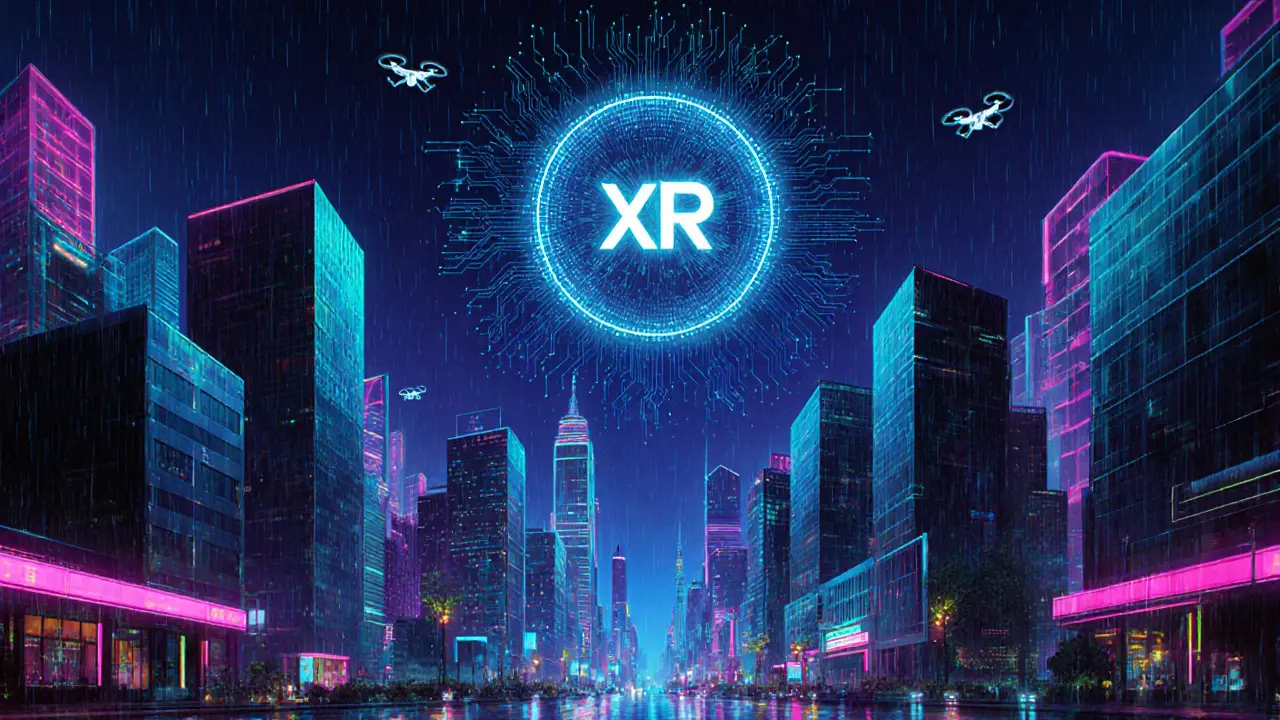SORA Bonding Curve Calculator
How Bonding Curve Works
In SORA's bonding curve model, new tokens are minted when users buy XOR, while tokens are burned when users sell. The price follows a predictable curve based on total supply.
Calculate Your Transaction
Transaction Results
Bonding curve effect: SORA's elastic supply mechanism automatically adjusts price based on demand. Buying increases supply and price, while selling decreases supply and price.
Quick Takeaways
- SORA (XOR) is a utility token built on a Substrate‑based parachain inside the Polkadot ecosystem.
- The token uses a bonding‑curve market maker that automatically adjusts supply and price.
- Transaction speed reaches ~6,000 TPS with fees of only a few cents.
- Governance is on‑chain - XOR holders can propose and vote on upgrades.
- Current market value is extremely low, limiting mainstream adoption for now.
What is SORA (XOR)?
SORA (XOR) is a cryptocurrency that powers a decentralized economic system designed to operate without debt or a central bank. The project was launched in 2019 by Soramitsu Co., Ltd. and runs as a parachain on the Polkadot network. In plain terms, XOR is both a medium of exchange for the SORA ecosystem and a governance token that lets holders steer the project’s future.
Unlike Bitcoin, which relies on proof‑of‑work mining, SORA runs on Parity Substrate, the same modular framework that powers Polkadot. This means the chain can process thousands of transactions per second while consuming very little electricity.
How the Token Bonding Curve Works
The core of SORA’s monetary model is a token bonding curve. Think of it as a built‑in market maker: every time someone buys XOR, new tokens are minted; when someone sells, tokens are burned. The price follows a predictable curve based on the total supply, so there’s always a transparent buy‑price and sell‑price.
This elastic supply mechanism aims to keep purchasing power stable without a central authority adjusting the money supply. In theory, a country could adopt XOR as legal tender, letting the supply expand or contract automatically with economic activity.

Technical Architecture
SORA lives as a parachain on Polkadot, giving it cross‑chain interoperability with other projects in the ecosystem. The chain inherits Polkadot’s shared security model, so it benefits from the relay chain’s validator set without having to build its own consensus from scratch.
Key components include:
- Substrate - the modular blockchain development kit that powers SORA.
- Polkaswap - a decentralized exchange (DEX) launched in 2021 that runs on SORA and showcases the bonding‑curve pricing in real markets.
- Cross‑chain bridges to Ethereum and other networks, allowing XOR to move freely between ecosystems.
Performance benchmarks from the 2023 whitepaper claim up to 6,000 TPS and block times of about three seconds, a far cry from Bitcoin’s 15‑minute confirmations.
Token Economics & Governance
At launch, the total supply of XOR was set at 12.6 quadrillion tokens. The massive quantity is intentional; because the bonding curve creates new tokens on demand, a high base supply prevents drastic price spikes when demand rises.
Governance is on‑chain. Any holder can submit a proposal-ranging from protocol upgrades to marketing campaigns-and the community votes with their XOR. This creates a feedback loop: the same token that powers the economy also decides how the economy evolves.
Funding for development comes from token issuance rather than debt. SORA Labs reports that the project has already allocated roughly $15 million to blockchain education initiatives without borrowing.
How to Acquire and Trade XOR
If you’re already familiar with Decentralized Finance (DeFi), the most straightforward way to get XOR is through Uniswap V3 on Ethereum. The XOR/WETH pool handles essentially all daily trading volume (about $4,000 as of 2023).
Steps for a typical user:
- Set up a Web3 wallet (MetaMask, Trust Wallet, etc.).
- Obtain some ETH for gas fees.
- Navigate to Uniswap V3, select the XOR/WETH pair, and swap the amount you want.
- If you plan to use SORA’s native DEX, bridge the XOR to the SORA network via the official bridge UI.
Because the bonding curve determines price, you’ll see a slight slippage on large trades-this is the mechanism that creates or destroys tokens to keep the market balanced.

Pros and Cons Compared to Other Cryptocurrencies
| Feature | SORA (XOR) | Bitcoin | Ethereum |
|---|---|---|---|
| Consensus | Proof‑of‑Stake (via Polkadot) | Proof‑of‑Work | Proof‑of‑Stake (post‑Merge) |
| Tx Speed | ~6,000 TPS (≈3 s finality) | ~7 TPS (≈10 min) | ≈30 TPS (≈12 s) |
| Tx Cost | Few cents | Several dollars | ~$0.01‑$0.10 (varies) |
| Supply Model | Elastic bonding‑curve | Fixed 21 M | Fixed 115 M (with inflation) |
| Governance | On‑chain XOR voting | Off‑chain community consensus | EIP proposals, on‑chain voting (still evolving) |
| Market Cap (2023) | ≈$1.8 M | ≈$530 B | ≈$210 B |
From the table you can see that SORA shines in speed, cost, and innovative supply mechanics, but it lags far behind in market adoption and liquidity.
Current Challenges and Outlook
The biggest hurdle for SORA is its tiny market cap and low token price (around $0.00000014 in 2023). Low valuation makes it unattractive for speculative traders, which translates into minimal daily volume-essentially confined to the Uniswap pool.
On the other hand, the platform’s technical foundation is solid. Ongoing development (SORA v3) adds performance tweaks and deeper integration with the Polkadot ecosystem. If a small nation or a regional bloc adopts XOR as a complementary digital currency, the project could gain a real‑world use case that outweighs pure speculation.
Price forecasts remain modest. Industry analysts from Swapspace project a range between $2.3 × 10⁻⁸ and $2.1 × 10⁻⁷ through 2026-still a fraction of a cent, but representing roughly a 50 % upside from current levels.
Ultimately, SORA is a niche experiment at the intersection of economics and blockchain. It offers a glimpse of how a non‑debt‑based monetary system could function, but it needs broader adoption to move beyond the dev‑centric community.
Frequently Asked Questions
What is the primary purpose of the XOR token?
XOR serves two roles: as a medium of exchange within the SORA ecosystem and as a governance token that lets holders vote on protocol upgrades, funding proposals, and network parameters.
How does the bonding‑curve pricing differ from typical order‑book markets?
Instead of matching buyers and sellers, the bonding curve automatically creates or destroys XOR tokens based on demand. The price rises when the supply expands and falls when tokens are burned, providing continuous liquidity without an order book.
Can I use XOR as a payment method outside the SORA network?
Technically yes, because XOR is an ERC‑20 compatible token on Ethereum via bridges. However, merchant adoption is currently minimal, so using XOR for everyday purchases is rare.
What are the security risks of holding XOR?
Since XOR lives on a Polkadot parachain, it inherits the relay chain’s security. Risks mainly come from smart‑contract bugs in bridges or DEXes, and from the low liquidity that could cause large price swings.
Where can I find the latest development updates?
The official SORA website (sora.org), the project's GitHub organization (github.com/soramitsu), and the @sora_xor Twitter account provide regular technical releases and governance proposals.







Comments
13 Comments
LeAnn Dolly-Powell
Wow, SORA looks super promising! 🚀 The low fees and fast Tx speed are exactly what the DeFi world needs. Keep an eye on it, you might see some real growth soon! 😊
Sam Kessler
The exposition on SORA's bonding‑curve mechanism is, at best, a veneer of sophistication masking a deeper ontological quandary within the nascent Polkadot substrate paradigm. One must interrogate the epistemic foundations of a tokenomics model that presupposes elastic supply as a panacea for monetary stability, all while the underlying governance apparatus remains susceptible to oligarchic capture. The deployment of a parachain architecture, though lauded for its interoperability, inherently delegates security assurances to the relay chain, which in turn proliferates a vector of systemic risk across the entire multichain ecosystem. Moreover, the asserted throughput of ~6,000 TPS, while theoretically attainable under ideal network conditions, fails to account for the stochastic congestion inherent in real‑world traffic spikes, thereby rendering the performance claims somewhat speculative. The notion that a low‑priced utility token can catalyze macro‑economic restructuring hinges upon the improbable adoption by sovereign entities-a premise that borders on hyperbole. In parallel, the token’s astronomical total supply of 12.6 quadrillion units introduces significant dilution concerns, raising questions about price discovery and market depth. The on‑chain governance model, though democratically presented, suffers from voter apathy and the classic "tyranny of the minority" where high‑stake actors can sway outcomes disproportionately. Finally, the reliance on external bridges to Ethereum and other ecosystems compounds attack surfaces, exposing XOR holders to cross‑chain replay attacks and smart‑contract exploits. In sum, while SORA's technical scaffolding is commendably modular, the confluence of economic, security, and adoption challenges renders its long‑term viability uncertain at best.
Steve Roberts
Honestly, the hype around SORA is overblown. Sure, the tech looks neat, but nobody's buying a token priced at a fraction of a cent when there's literally zero real‑world usage. It's just another experimental playground for crypto nerds.
Patrick Rocillo
Totally get where you're coming from, Steve! 🌈 But think about the potential if a small community or a local council decides to adopt XOR for micro‑transactions. The color‑full ecosystem could blossom into something vibrant. 🎨
Aniket Sable
Yo bro, SORA is cool man. i think it will get big soon, just wait and see.
emma bullivant
One could muse that the very act of forging a token without debt is a philosophical statement about the nature of value-though my typoes may obscure the profundity of such musings.
Karla Alcantara
From a cultural standpoint, it's fascinating to see a Japanese‑origin project integrating so seamlessly with the global Polkadot network. This cross‑border collaboration exemplifies how decentralized tech can bridge diverse traditions.
Ralph Nicolay
It is incumbent upon participants to meticulously evaluate the systemic implications of the bonding‑curve approach, particularly in relation to liquidity provisioning and price volatility.
Nick Carey
Meh, looks boring.
Sonu Singh
Hey folks, just a quick tip: when you bridge XOR to the SORA network, make sure you double‑check the bridge fee UI, because occasionally the gas estimate can be a bit off due to network congestion.
Peter Schwalm
Great points above! If you're new to this, start with a small amount on Uniswap, get a feel for the slippage, then you can explore the parachain features. Happy farming!
Marianne Sivertsen
Reflecting on the broader narrative, SORA represents a modest but meaningful experiment in rethinking monetary policy, even if its practical impact remains limited for now.
Shruti rana Rana
In the grand tapestry of blockchain innovation, SORA shines like a delicate brushstroke-its future may be modest, yet its cultural resonance could inspire many. 🌏✨
Write a comment